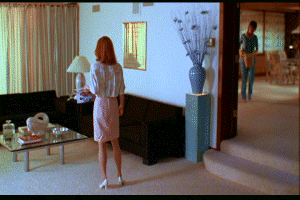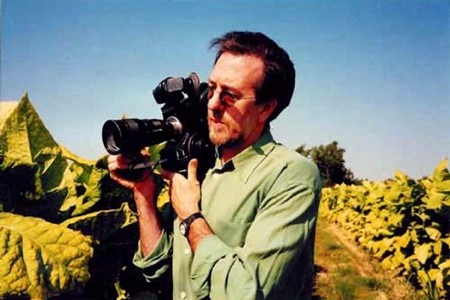From the Chicago Reader, July 28, 1995. —J.R.

Safe
Rating *** A must see
Directed and written by Todd Haynes
With Julianne Moore, Xander Berkeley, Ronnie Farer, Martha Velez-Johnson, Chauncy Leopardi, and James LeGros.

I know that Americans are supposed to hate whatever they can’t understand, and certainly current Hollywood filmmaking is predicated to the point of tedium on this truism. But part of what makes Todd Haynes’s Safe the most provocative American art film of the year so far — fascinating, troubling, scary, indelible — is that it can’t be entirely understood. The mystery and ambiguity missing from mainstream movies are all the more precious, magical, even sexy here, in a 35-millimeter feature employing professional actors set partly in the plusher suburban reaches of the San Fernando Valley.
By chance the star of Safe, Julianne Moore, also plays the female lead in the least mysterious Hollywood feature of the moment, the unspeakable Nine Months — a movie that essentially celebrates the world that Safe attacks. This makes Haynes’s film even more dangerous: seeing both films might be like combining chemicals that produce lethal explosives. One suspects that anyone who sees both in swift succession will be flirting with social or political revolution or some sort of madness. Read more
From the Chicago Reader (December 3, 2004). — J.R.

Bright Leaves
*** (A must-see)
Directed and Written by Ross McElwee

As a filmmaker who’s always philosophizing about his family, his southern heritage, and the meaning of life, Ross McElwee can get a little high-flown at times. The funniest shot in the latest installment of his autobiographical saga, Bright Leaves, brings him down to earth a bit — and shows that McElwee actually may have learned something from the deflation. The shot occurs toward the end of the film and there are several reasons it’s so funny.
(1) A noisy dog is following McElwee as he threads his way through a kitschy sculpture garden, whose relevance to the story remains obscure. Is it cemetery statuary? Whatever it is, it’s a visual and narrative non sequitur that only adds to the screwball ambience.
(2) The growling dog, seen near the lower edge of the frame, recalls a smudgy, minimalist black-and-white comic strip drawn by David Lynch between 1983 and ’92, The Angriest Dog in the World. (The graphics of the four panels in each strip were almost identical — the same dog angrily pulling at the same chain in a fenced-in backyard — but the introductory words and the balloons of dialogue coming from someone unseen inside the house were always different.) Read more
Published in Omni circa 1982. I owe this assignment and all my others at this magazine to the late Kathleen Stein, my editor there — a former classmate at Bard College and flatmate in New York during one summer. — J.R.

The Arts: TV
Jonathan Rosenbaum
How far can the human braln go in delvlng into its own workings? An
ambitious, new eight-part television series — being produced by WNET
for airing this fall — broaches this question at the same time that it
partially answers it, byproviding us with a veritable Cook’s tour
through the state of contemporary brain research. “What curious art the
brain, too finely wrought, /Preys on herself, and is destroyed by thought,”
glumly opined eighteenth century writer Charles Churchill, in an epistle
addressed to artist William Hogarth. But Churchill’s philosophical lament,
quite apart from its odd characterization of the brainas essentially
feminine, can’t hold water in relation to the healthy self-preying instinct
adopted, by the makers of The Brain and all that it uncovers.
“It’s totally addictive to go into this,” science editor Richard Hutton, a
writer and producer on the series, admitted to me about his own perusal
of brain research, in preparation for the eight one-hour shows. Read more





